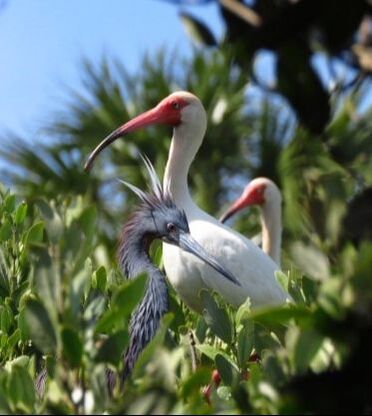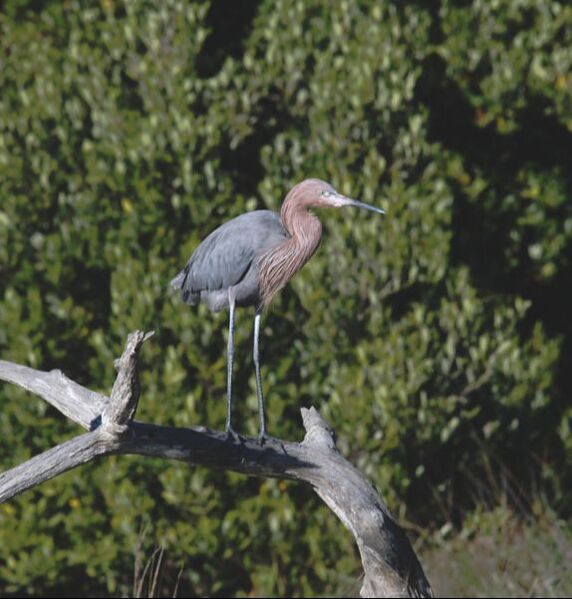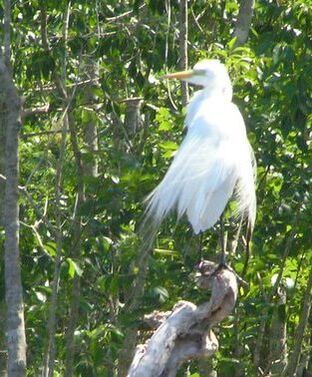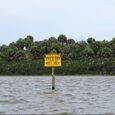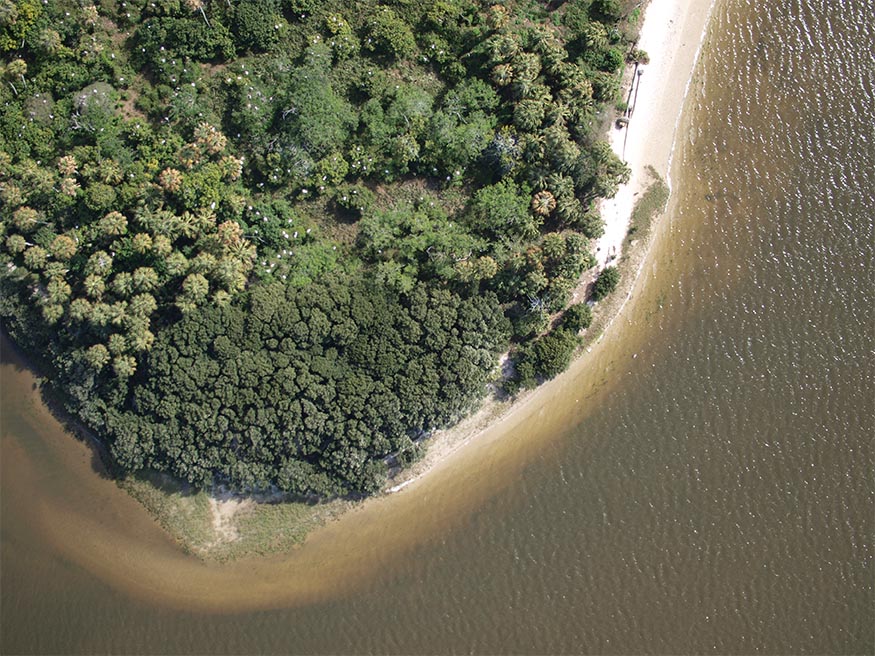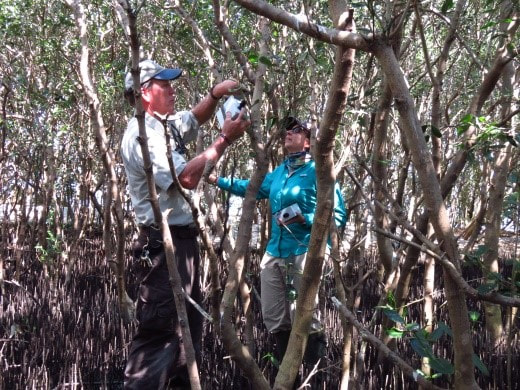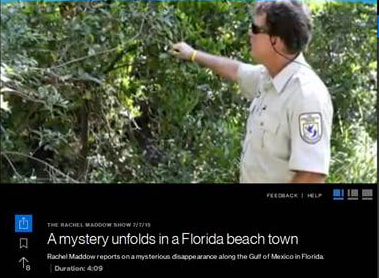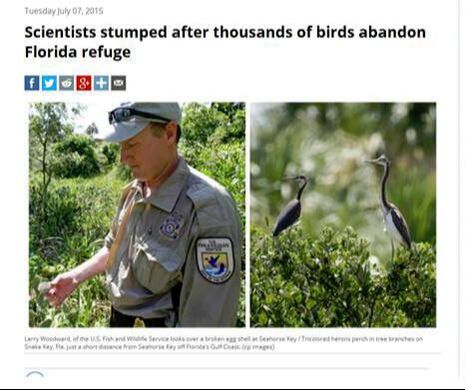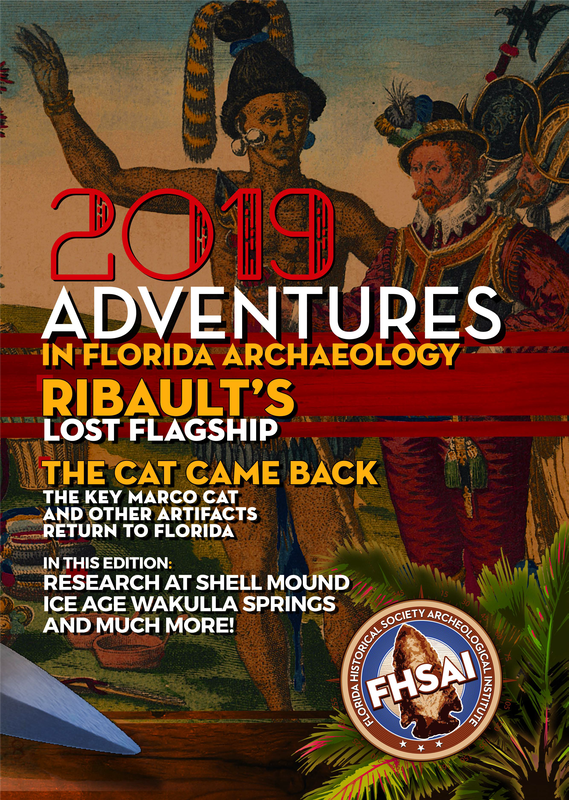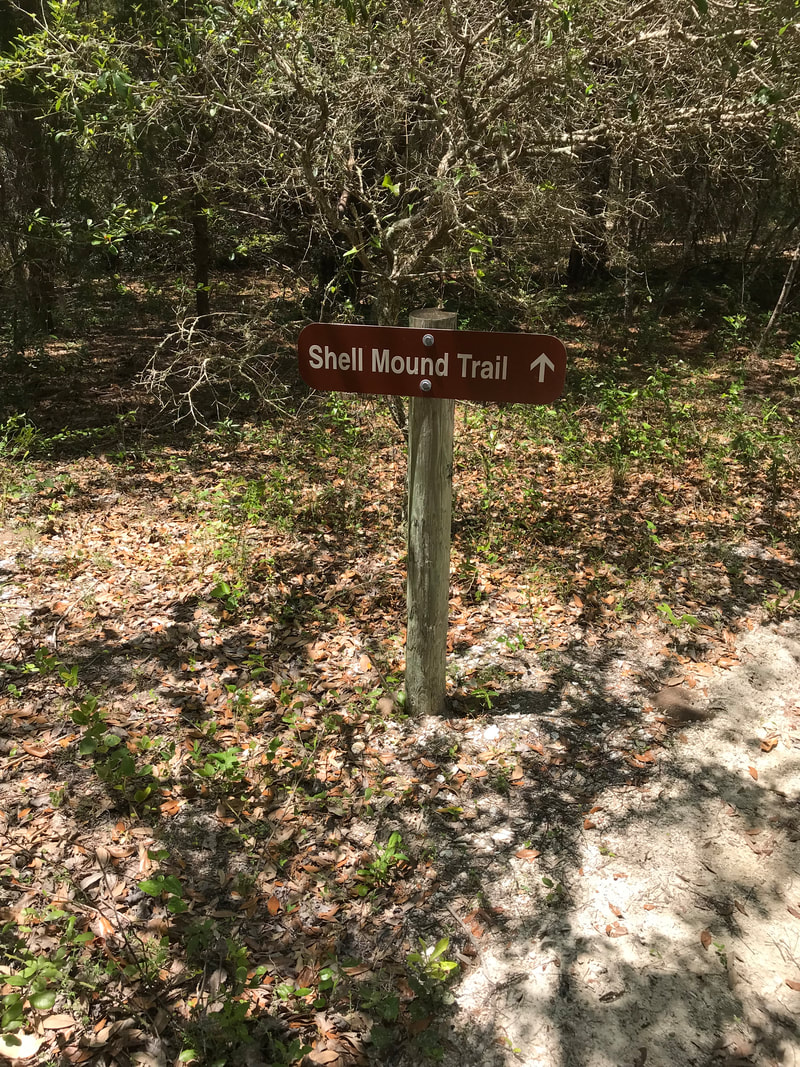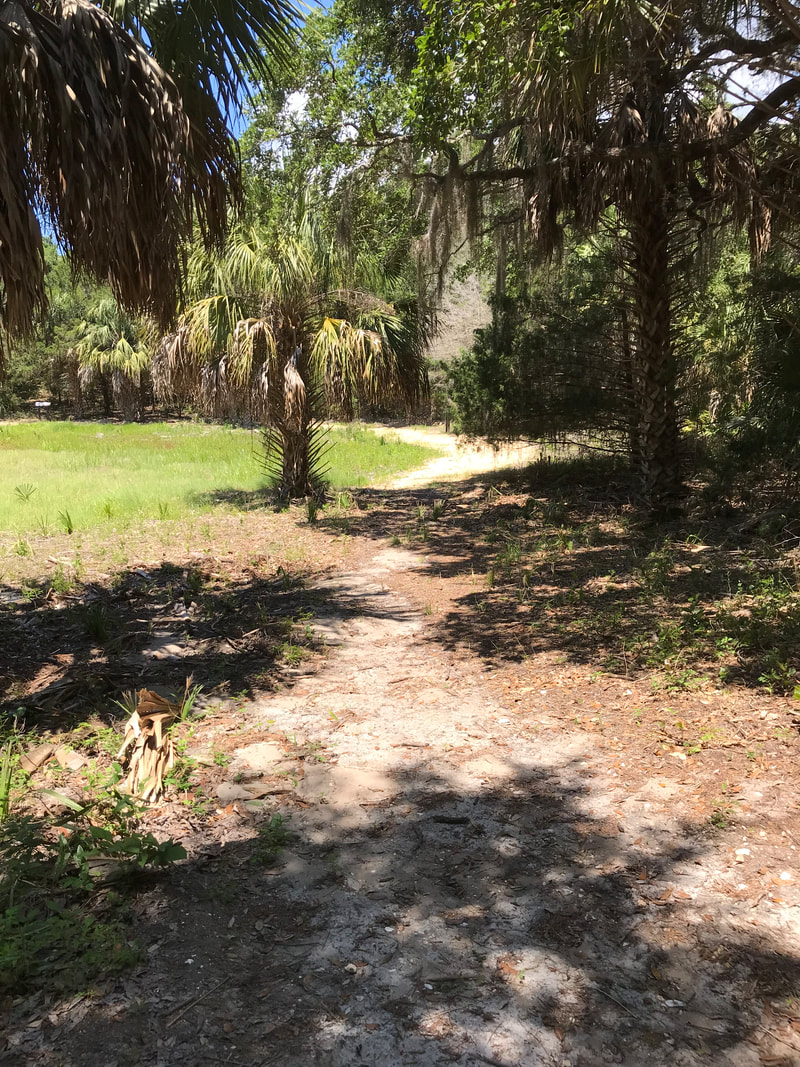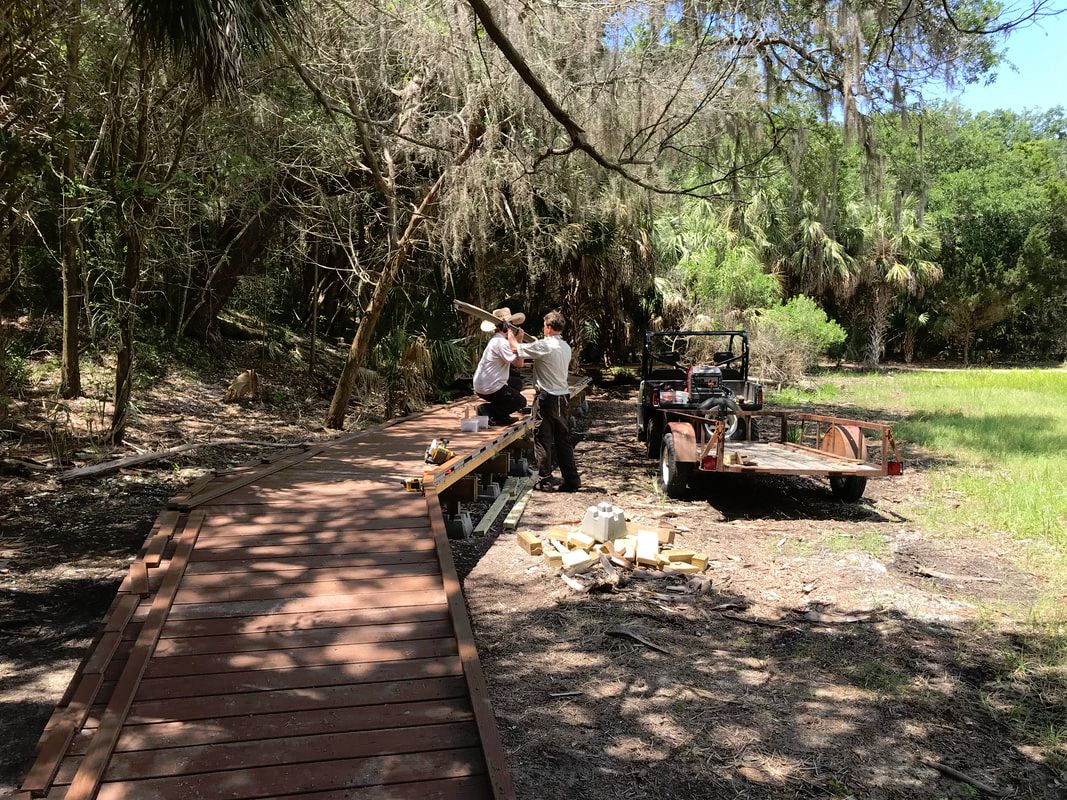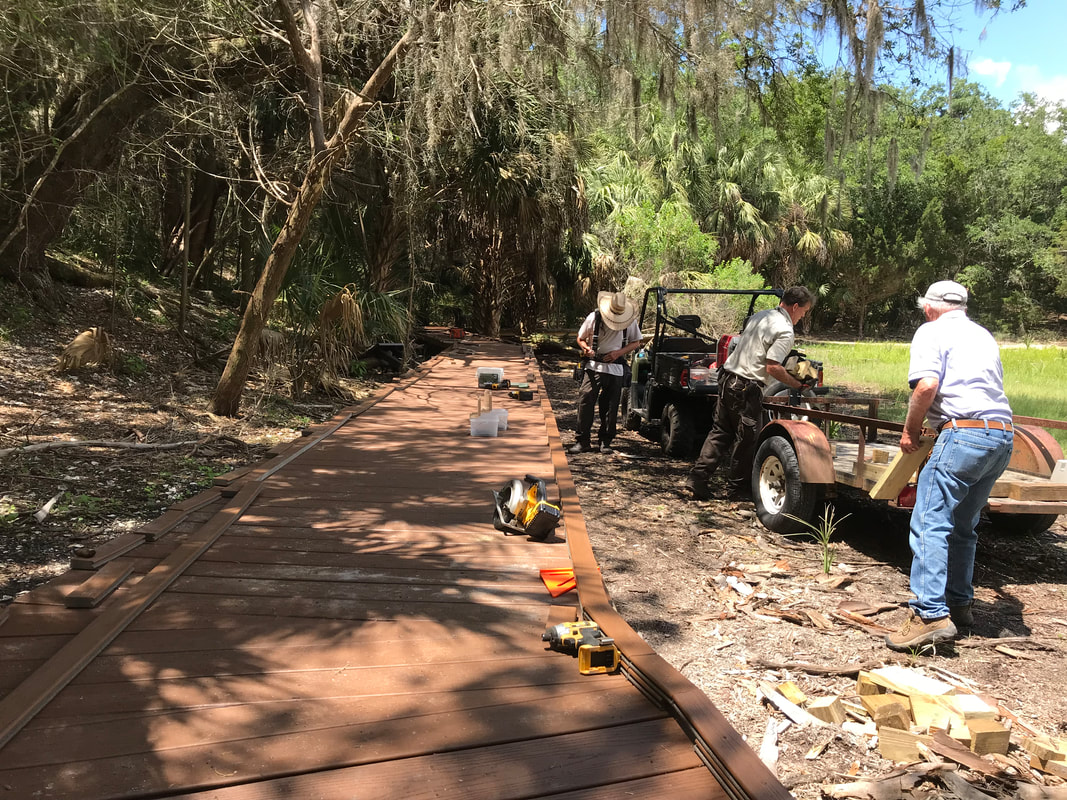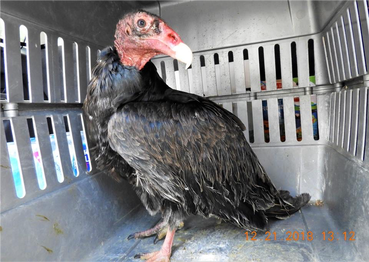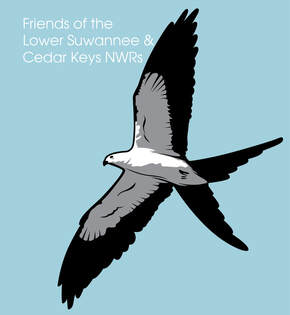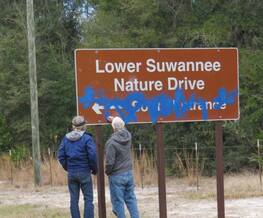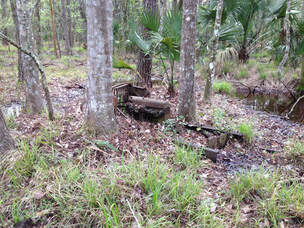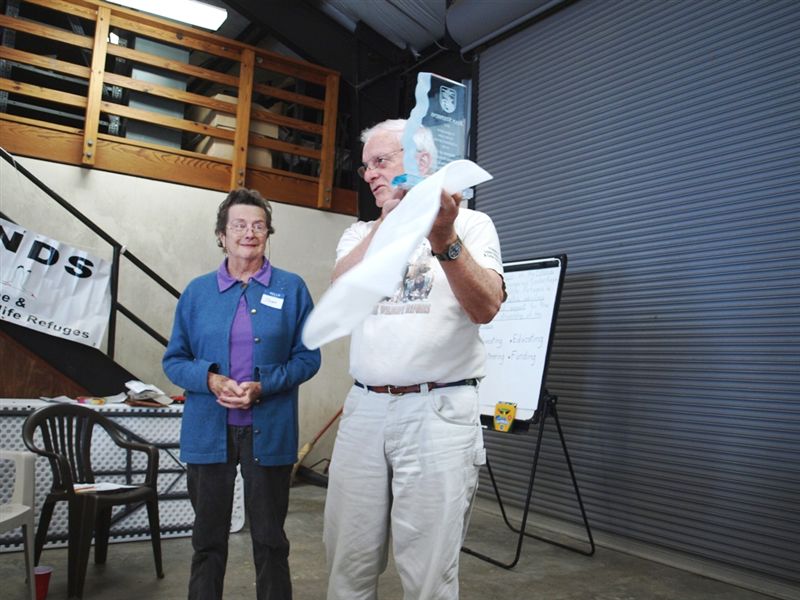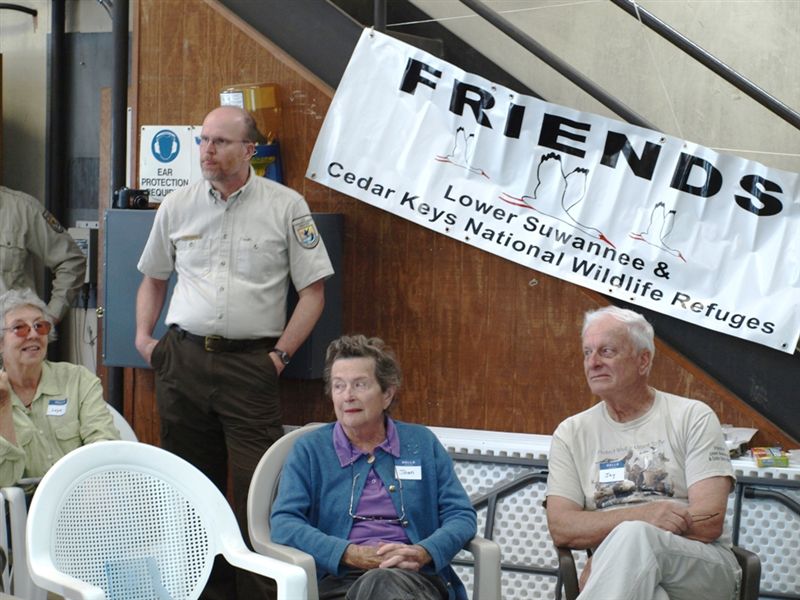Who is Nesting on Snake Key this Season? The mixed species wading bird rookery at Snake Key is thriving this year. The numbers of birds are beginning to approximate the "glory days" of nesting at the recently abandoned Seahorse Key colony. Refuge staff and volunteers completed the annual wading bird flight line surveys for the Snake Key rookery in May. White Ibis have returned to nest in the area in huge numbers, with an estimated 2,500 - 3,000 nesting pairs. Also nesting in large numbers are Tri-colored Herons (est. 500 nests), Snowy Egrets (est. 400 nests), Great Egrets (est. 120 nests), Brown Pelicans (est. 100 nests), and Double Crested Cormorants (est. 200 nests). Other notables include an estimated 60 Roseate Spoonbill nests and 3-4 Reddish Egret nesting pairs. We also recently completed drone flights over the colony in an effort to count and validate nesting data, but have not yet completed digital post-processing to begin analyzing that information. Speaking of Babies – An Aside Project Engineer Josh Havird - formerly of Lower Suwannee National Wildlife Refuge, now posted at St Mark's NWR is a brand new proud papa of a baby girl. Mom and little Emily are both doing great. Josh is taking some family leave to be with them. Closure Limits Nesting Disturbances at Snake Key
Largest Wading Bird Rookery Do Different Bird Colonies have Unique Sounds?
What Happened to the Seahorse Key Rookery? Most folks will recall that the large Seahorse Key rookery was suddenly abandoned during the nesting season back in April of 2015. Popular interest was so high that the national media covered "Our Bird Mystery" extensively. We still cannot definitively say why all the birds left their nests during that event, although disturbance was likely a factor.
0 Comments
 Photo from Solstices Feasts and Other Gatherings, 2019 Adventures in Florida Archaeology. Topographic map shows the locality of Shell Mound with 3-D inset (lower right) of the C-shaped ridge and open plaza. Image by the author and Terry Barbour from both open-access LiDAR data and higher-resolution LiDAR data provided by GatorEye
Members of the Friends of the Lower Suwannee & Cedar Keys NWRs share an interest in nature and especially our birds with members of the Cedar Keys Audubon Society. If you are available during the summer months to help with the Audubon bird rescue program, your help would be greatly appreciated. Cedar Keys Audubon's Capt Doug Maple needs folks to answer their new bird rescue line and use the phone tree to notify volunteers. This is a great way to help our nesting and roosting birds. You don't have to be a rescuer or even leave your air conditioned house. You just have to be able send text and voice messages. If you can help please call Doug at 352 949 1995.
With support from the Florida Division of Historical Resources, the Cedar Key Light Station on Seahorse Key has a new replica lens. On Friday, July 5, from 7 to 9:30 pm, all are invited to Cedar Key for the official lens-lighting celebration. The lighting ceremony itself will be at 9:00. Details are in the Nature Coast Biological Station May newsletter and soon on the NCBS website. The following day, Saturday, July 6 from 9 am to 3 pm, there will be an Open House on Seahorse Key. Come out, enjoy time on the island which is part of the Cedar Keys National Wildlife Refuge. Visit the marine lab and the Light Station which are managed on the island by the UF/IFAS Nature Coast Biological Station. This will be one of only about four Seahorse Key Open Houses during the year. Access to Seahorse Key is available to the public through Tidewater Tours, Cedar Key Boat Rentals and Island Tours, or it can be accessed by private boats during the Open Houses.
Earlier in May, Dr. Ken Meyer, executive director of the Avian Research and Conservation Institute (ARCI) in Gainesville FL, visited the Lower Suwannee Refuge with several research associates to consult with Refuge staff members Larry Woodward and Daniel Barrand about Swallow-tailed Kite habitat and conservation efforts.
According to the ARCI website, the Swallow-tailed Kite's range, which once went along the Mississippi River as far north as Minnesota, is now just a third its historic size. ARCI works to develop management techniques for these at-risk birds. Since 1996, they have used satellite telemetry to study the ecology of Swallow-tailed Kites, including the 10,000 mile migration they make each year to the humid plains of Brazil and back to the lowlands of the southeast U.S. At the May meeting of the Friends Board, discussion about Swallow-tailed Kite research on the Refuge led to an interest in Friends possibly supporting the cost for ARCI to tag a "Refuge" bird and follow its migration. Almost all of us have seen these iconic birds at the Refuge and awaited their annual return in Spring. Perhaps some of us would want to participate in the research about them and their relationship to our Refuge and the habitat it preserves for them. The Friends of the Lower Suwannee & Cedar Keys NWRs has been concerned about the challenges our Refuge has been facing for some time now because our lack of law enforcement staff.
For the second half of 2018, after our previous officer took a new position and left our Refuges, no full-time law enforcement officer was assigned to the Lower Suwannee and Cedar Keys Refuges. Since the first of 2019, we also have lost our part-time law enforcement officer when the Fish and Wildlife Service ended the long-time practice of having dual-function officers who had law enforcement and other management assignments. Deputy Manager Larry Woodward had been a dual-enforcement officer. Friends, as an organization and individual members of Friends as concerned citizens, have been contacting our legislators and Fish and Wildlife Service managers to voice our concerns and request immediate changes to the situation. At least partially in response to those calls for attention by Refuge visitors and users, the Refuge finally was authorized to begin the process of hiring a full-time law enforcement officer. With luck, one will be in place by the end of the year. However, Refuge Manager Andrew Gude and the other Refuge staff members have continued to receive reports of illicit activity on the Refuges and have continued to be hampered in following up in a timely way. Recently at least one other Refuge visitor complained loudly to his Congressional representatives about feeling insecure on the Refuge after observing illegal activity while fishing in an area particularly used by visitors with a "special use permit" allowing additional access for people with disabilities. Friends is very happy to report that the Refuge has temporarily been assigned two law enforcement officers. They are here and we are delighted. Hurray, and thank you to Refuge visitors with loud voices. Thanks to Friends member Tom Leibert for the photos. Joan Stephens was a force for nature, especially for nature in our part of the world. She was the founding president of the Friends and served on the Board from the time Bylaws were incorporated and we became a nonprofit organization until the Annual Meeting in 2011, when she retired. Even after she was not serving on the Board, she led bird walks weekly and advised Board members regularly.
At age 89, Joan died peacefully in hospice care this week. Her obituary, prepared by her family, all of whom are long-time Friends members, appeared in Cedar Key News today and will also be in the Gainesville Sun. We miss you, Joan. |
Archives
June 2024
|

Friends of the Lower Suwannee & Cedar Keys National Wildlife Refuges
P. O. Box 532 Cedar Key, FL 32625 [email protected] We are a 501(c)(3) nonprofit organization. |
|
